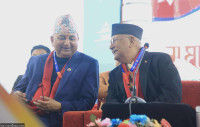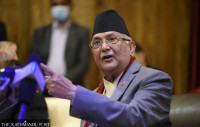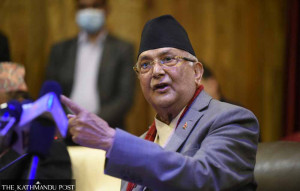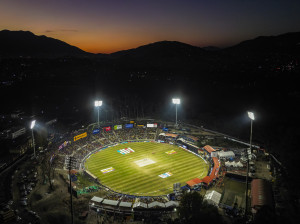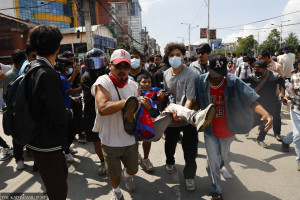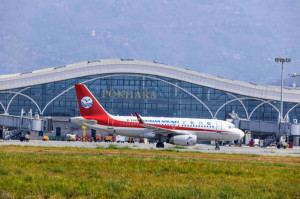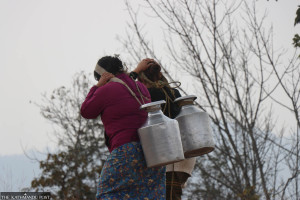Editorial
No room at the top
Overcrowding on Mt Everest is dangerous, the government must pay heed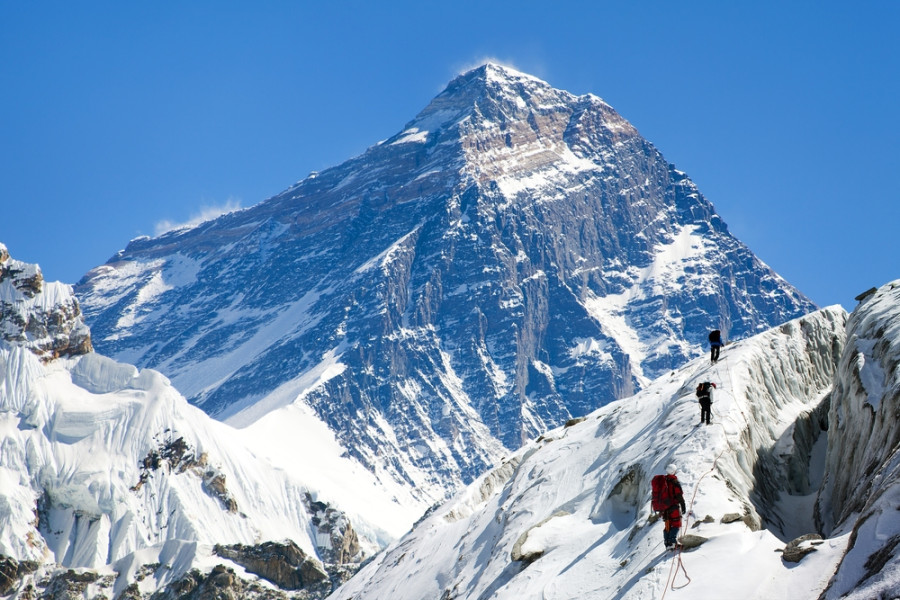
Last week, Mount Everest was more crowded than it has ever been in history. On Wednesday, the longest single-day weather window of 24 hours to summit Everest led to 250 climbers vying for the summit; more than 200 made it to the top. In a viral photo taken by Nirmal Purja, dozens of climbers could be seen lining up near the Hillary Step on their way to the summit. Some climbers had to wait for hours for their turn to stand atop the world’s highest point. There have always been many vying for the world’s highest point, but the extent of overcrowding, as seen on Wednesday, can have disastrous consequences. Out of nine deaths on Everest from the Nepal side this year, two can be directly attributed to the long wait.
A ‘traffic jam’ on Everest can be especially dangerous above 8,000 metres—considered the ‘Death Zone’. Since climbers need to wait for long hours, huddled against the wind and cold, their chances of frostbite and altitude sickness increase exponentially. Climbers also carry little on the final phase of the ascent, meaning they can run out of oxygen if the wait is too long.
It is not unusual for a large number of climbers to reach the summit on a single day, because weather conditions only allow for two or three windows of opportunity in May. And the government collects huge amounts of revenue from these mountaineers. Royalties from Everest constitute one of the highest sources of tourism revenue for the country. According to the Department of Tourism, mountaineers paid the government Rs 441.38 million in total to summit Everest this spring climbing season alone. But revenue cannot come at the cost of safety. To prevent overcrowding while promoting safety, the government, along with expedition companies and the climbers themselves, needs to set up regulations and collectively discuss a solution to this predicament.
One solution would be to place a cap on the number of people attempting to ascend Everest per day per season. This way, while the government will still be earning revenue, it will also be minimising the number of accidents due to overcrowding. This year, over 381 climbing permits were issued, but the actual number of those summiting Everest neared a thousand, including the hundreds of high-altitude climbing Sherpas who’re hired to accompany and guide climbers. A hard limit on the number of permits issued every year — perhaps 250 — could be considered.
Along with the cap, the government could also raise the price of permits, so that revenue continues to be generated but the numbers are more manageable. The hike in price might deter inexperienced, amateur climbers, who currently constitute a sizeable portion of those attempting Everest. Criteria could be devised for who can climb Everest and those who cannot. Meaning, climbers must be vetted properly. A climbing history of other training peaks could serve the government’s revenue concerns while also ensuring that those who’re climbing Everest have the wherewithal to do so.
The Everest experience is no doubt a once-in-a-lifetime experience, but the continuing deaths of climbers due to overcrowding, while ascending or descending, needs to be taken seriously. As the government is making a sizeable income from these mountaineers, it must also share in the responsibility of their deaths, and take measures to ensure that mismanagement does not result in a compromise on the climbers’ safety.
More from the Post's Everest coverage:
— Authorities consider barring weak climbers from Everest
— This is what it takes to get a foreigner to Everest
— In a new record, over 200 climbers summit Everest in a single day
— The man who made it possible for hundreds of foreigners to climb Everest is finally retiring




 13.12°C Kathmandu
13.12°C Kathmandu
